Jackie's OS
A speculatively reimagined operating system for my childhood self.

Featured in ArtConnect Magazine and exhibited as a finalist for PRIMER2020's Emerging Designer Exhibition.
Jackie’s OS is a speculatively reimagined operating system designed for (and with) my childhood self.
A web-based experience simulating the childhood computing experience I wish I could’ve had, Jackie’s OS nostalgically longs for a timeline that never was - asking how things could have played out differently - both in how I grew up, and in the world of technology.
Jackie’s OS was created for my thesis at NYU ITP. My work on Jackie's OS is ongoing - check back for future updates to my project and more writing on my design process!
Relevant Links
- Jackie's OS, the web experience.
- My original thesis documentation on the ITP Thesis 2020 site.
- My thesis presentation video on Vimeo.
About Jackie's OS
Over my life, I’ve transitioned from a starry-eyed child fascinated by technology, to an adult disillusioned by her experiences in it. I’ve also begun to notice the dominant values that echo my social and technical worlds: I must be rational and productive, work to prove my value, quieten my emotions.
Adulthood forces me to unpack some of these beliefs, but as I navigate a career in technology — how do I continue forward? How can I reconcile with ideologies still so ingrained in computing culture? What can it look like to refigure my personal relationship with computing, by going back to its roots?
How can I speculatively reimagine my childhood experience of computing, and what might I learn from the process?
My response to these questions is Jackie’s OS: a speculative reimagining of my childhood computer that dreams about an alternate timeline of my formative, (twee)n years in the mid-2000s.
Drawing from research of computing systems as echoing patriarchal, hegemonic values about intelligence, productivity, and control, I ask: what if my computer could embody values I wish I could’ve seen? That I have value the way I am, deserve to have space for emotions, and have agency on my own terms?
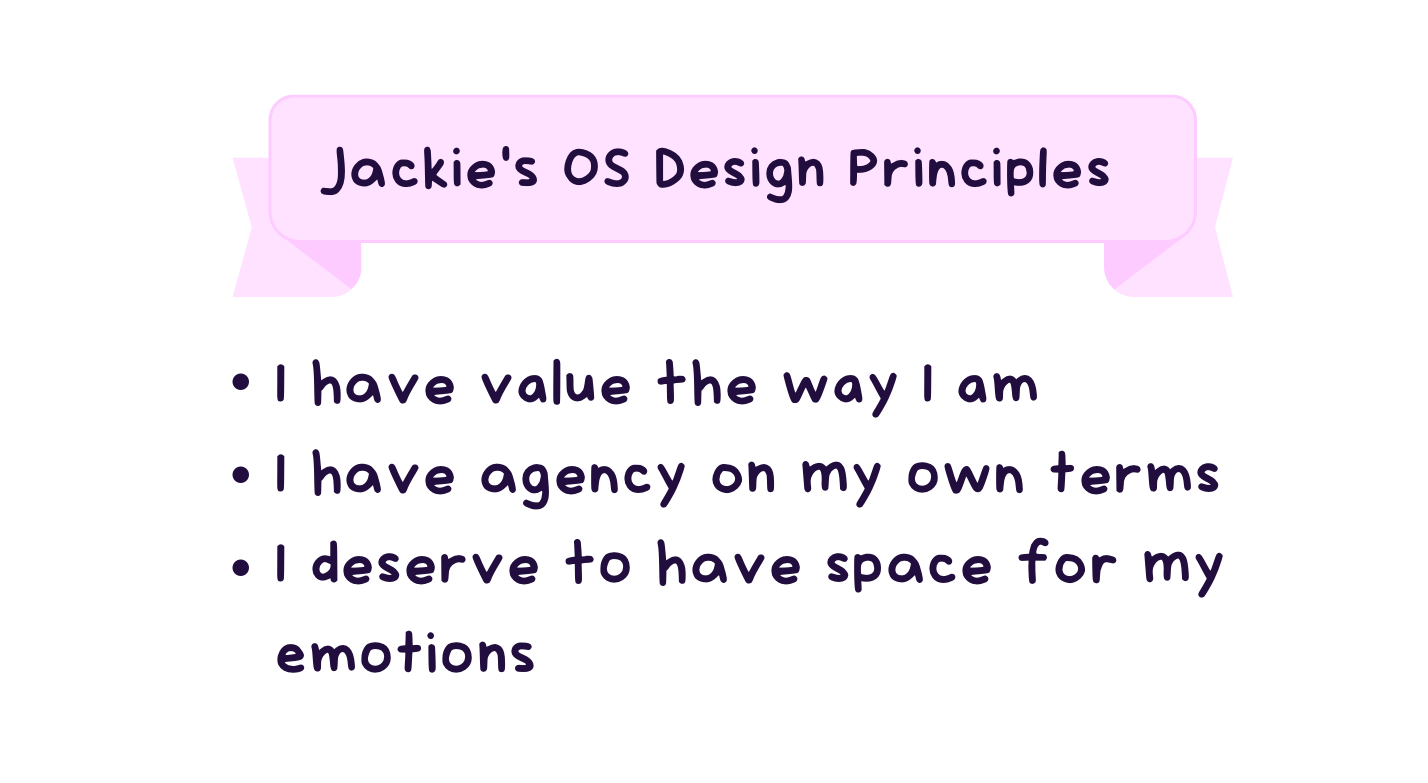
These values are the core design principles in Jackie’s OS and its reimagined graphical user interface, file system, user authentication, and applications. In a simulated, web-based operating system, visitors can encounter the alternate-reality world of my past self by clicking around the interface, exploring my things, and playing with applications - all designed in my whimsical, childhood imaginary.
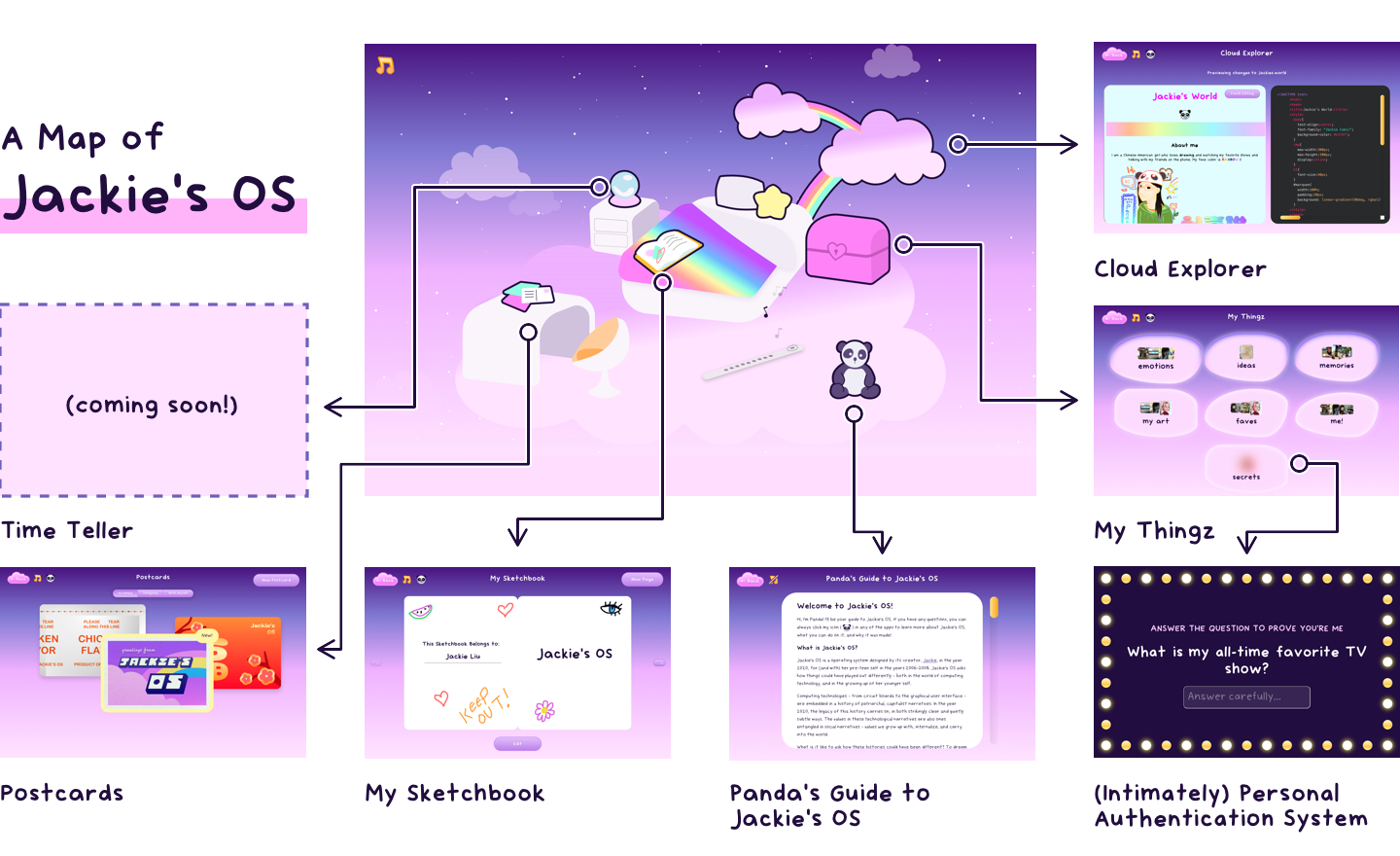
A map of interactive applications in Jackie's OS.
Tour of Jackie's OS
In designing and building features for my OS, I kept these core design principles in mind, drawing from my own experiences to find opportunities for how they might playfully manifest in an operating system.
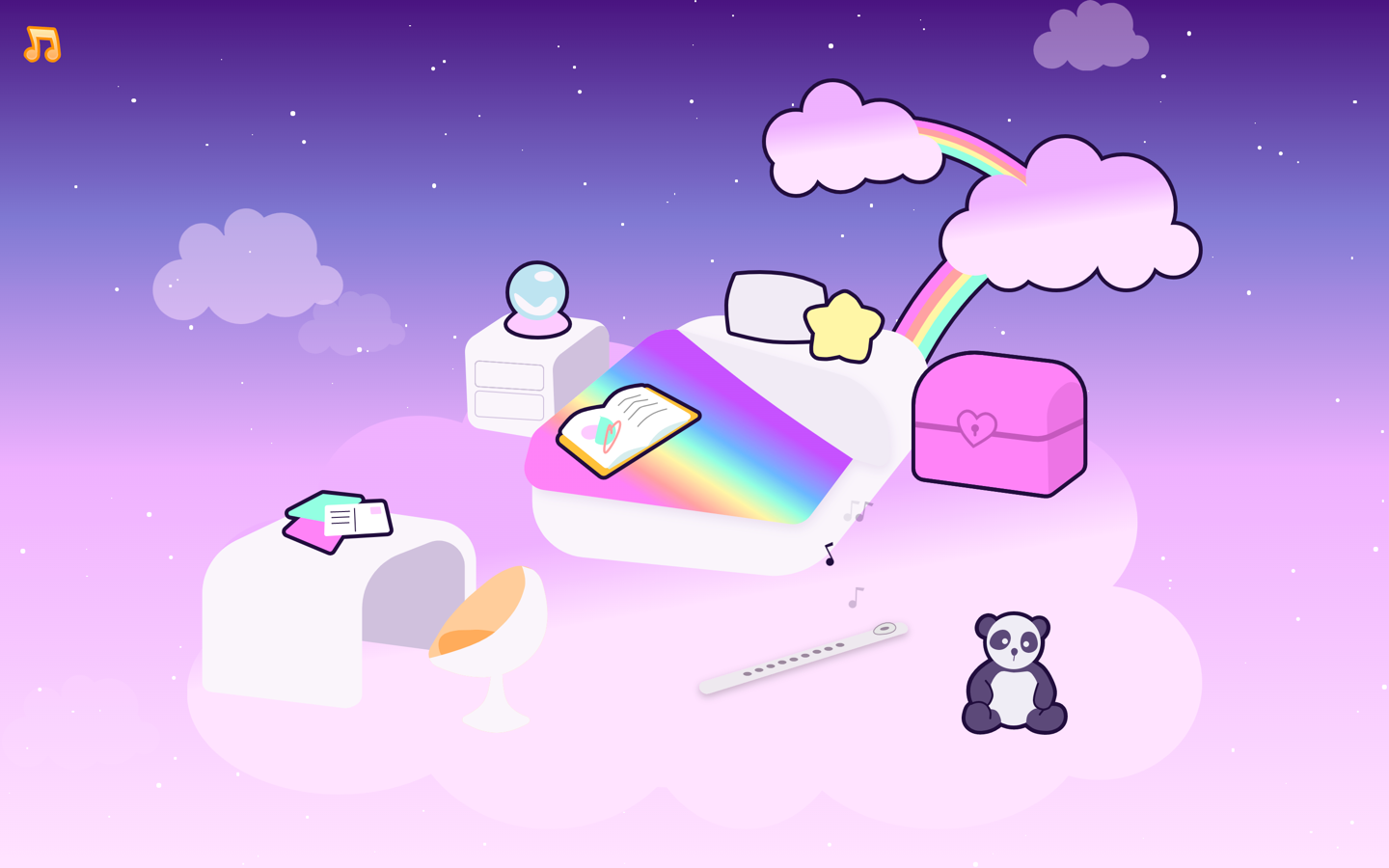
The Bedroom
Learning that the original computer desktop design and its office metaphor comes from historical values of capitalist productivity, I wanted my OS to instead be a place for rest and dreaming - so I set it in a bedroom!

No windows, no problem!
I also learned that windows in the graphical user interface (GUI) are linked to multitasking and productivity, so I chose to not use windows in my interface paradigm.
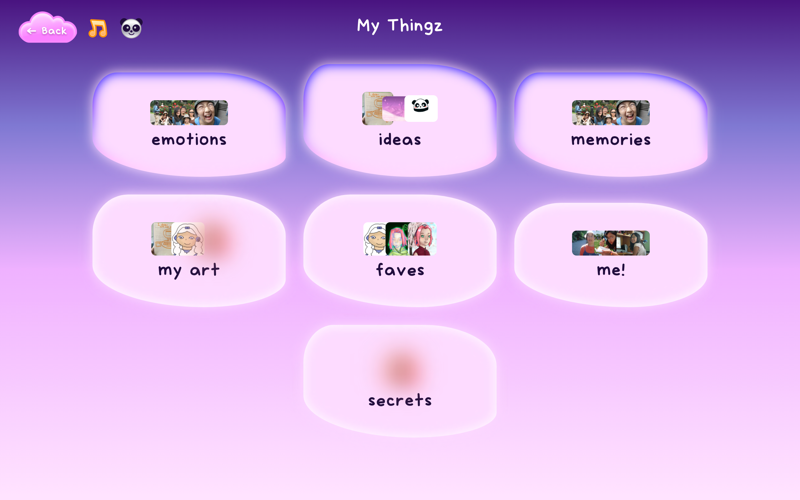
My Thingz
An alternate “file explorer” that doesn’t rely on the office metaphor, and offers an intersectional format of organizing “things” on the computer, rejecting singular categorization.

(Intimately) Personal Authentication
A system to access “secret” items by answering a trivia question about me - embodying a relationship about discovery and trust, rather than one of control and dominance.

Cloud Explorer
A web browser featuring an embedded code editor, that displays the website I would have had - if technical tools for creativity on the web were more accessible to me as a child.

My Sketchbook
A main application for creating on Jackie’s OS. It pays a homage to my relationship with art and drawing - a practice that I feel has been always in tension with notions of being successful in math, science, and technology.

Postcards
An alternative email client to send messages via postcards (for real!), and to write messages to past and future-me. It introduces a new visitor to Jackie's OS through a letter written to my childhood self.

Panda’s Guide to Jackie’s OS
A "help guide" to help visitors understand the features and design choices of Jackie's OS.
Influences
Jackie’s OS came to be through my ongoing interest in the history and sociology of computing, as well as speculative interventions into it.
I’ve been inspired by others who work to create interventions into computing, like the speculative artwork of Zach Blas and Rachel Simone Weil, and movements that make technology more inclusive by questioning traditionally masculine aesthetics, like the “Cybertwee” art genre and Amy Wibowo’s “Bubblesort Zines”. I also build upon the work of other educators, such as Laine Nooney and Tega Brain's “Speculative Pasts” pedagogy, which experiments with speculative design’s potential for historical thinking about computing technology.
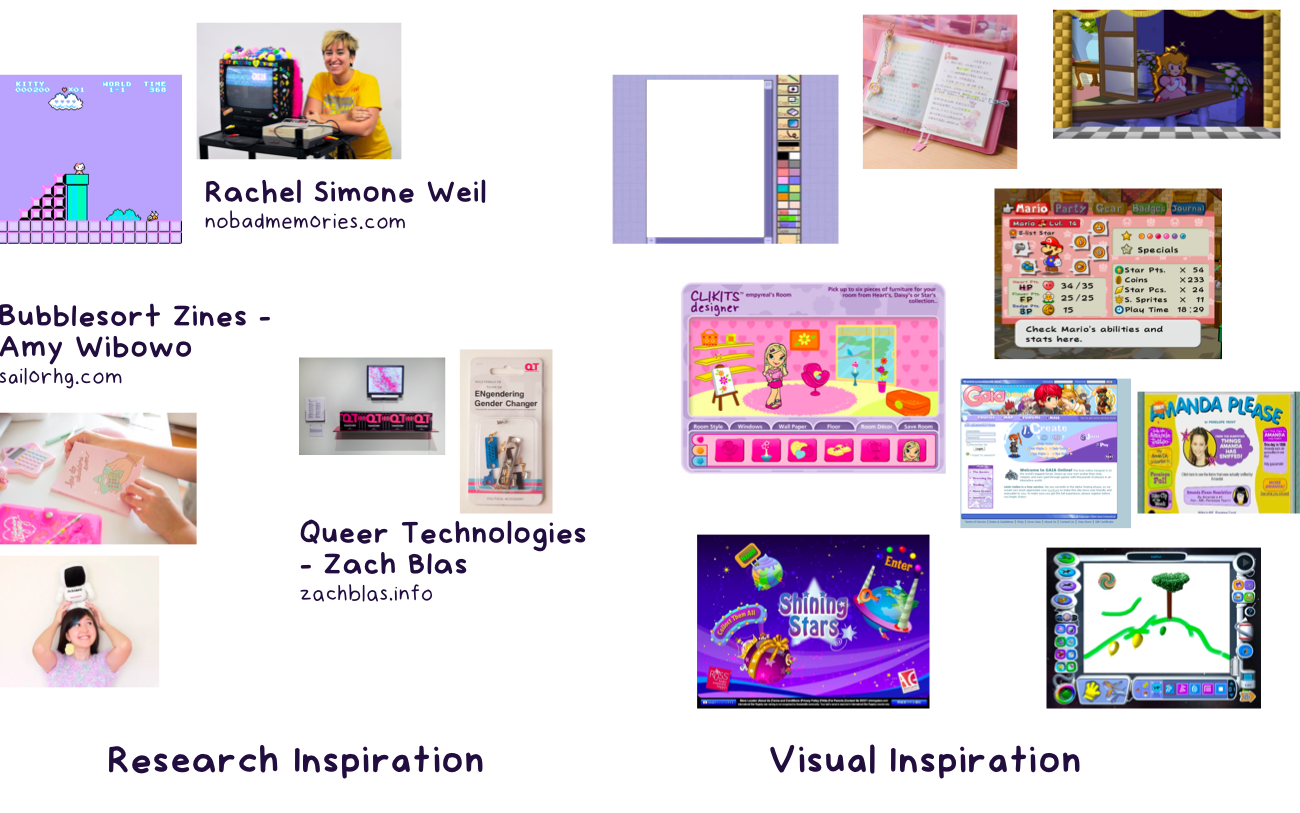
Visually, I was inspired by the aesthetics of the web designs, virtual worlds, and games of my childhood in the mid-2000s.
Design Process (coming soon!)
So far I’ve written about my motivations for Jackie's OS - but if you're curious about a deeper dive into how I designed and built it, stay tuned for a case study coming soon!
Thesis Presentation Video
Future Work
Nostalgia, in my view, is not always retrospective; it can be prospective as well. The fantasies of the past, determined by the needs of the present, have a direct impact on the realities of the future.
Svetlana Boym, quoted in William Kurlinkus' Nostalgic Design.
While Jackie’s OS itself is a playful exploration specific to my own experiences, it is also my starting point to help democratize creative and critical engagement in technology.
I am interested in asking: what could it mean to get others to reimagine technologies for themselves, from a place of care and healing?
- To dream of alternatives to our current (and historical) sociotechnical realities, questioning “universal” paradigms?
- To self-reflect, understanding how our lived, social experiences entangle with systems of harm in technology?
- To look to the past, using nostalgia as both a lens to acknowledge what we have lost and to reconcile with how things could have been, and could be, better?
I hope to extend this prompt as an educational tool in the form of workshops, zines, or web experiences. Through this work, I hope to create lower-barrier tools that broaden participation in speculative futures (and pasts), pushing beyond the traditional contexts of speculative critical design and nurturing an ethos of care within mainstream computing education and culture.
If you’re a curator/educator who would like to collaborate as I bring these ideas to life, don’t hesitate to get in touch!